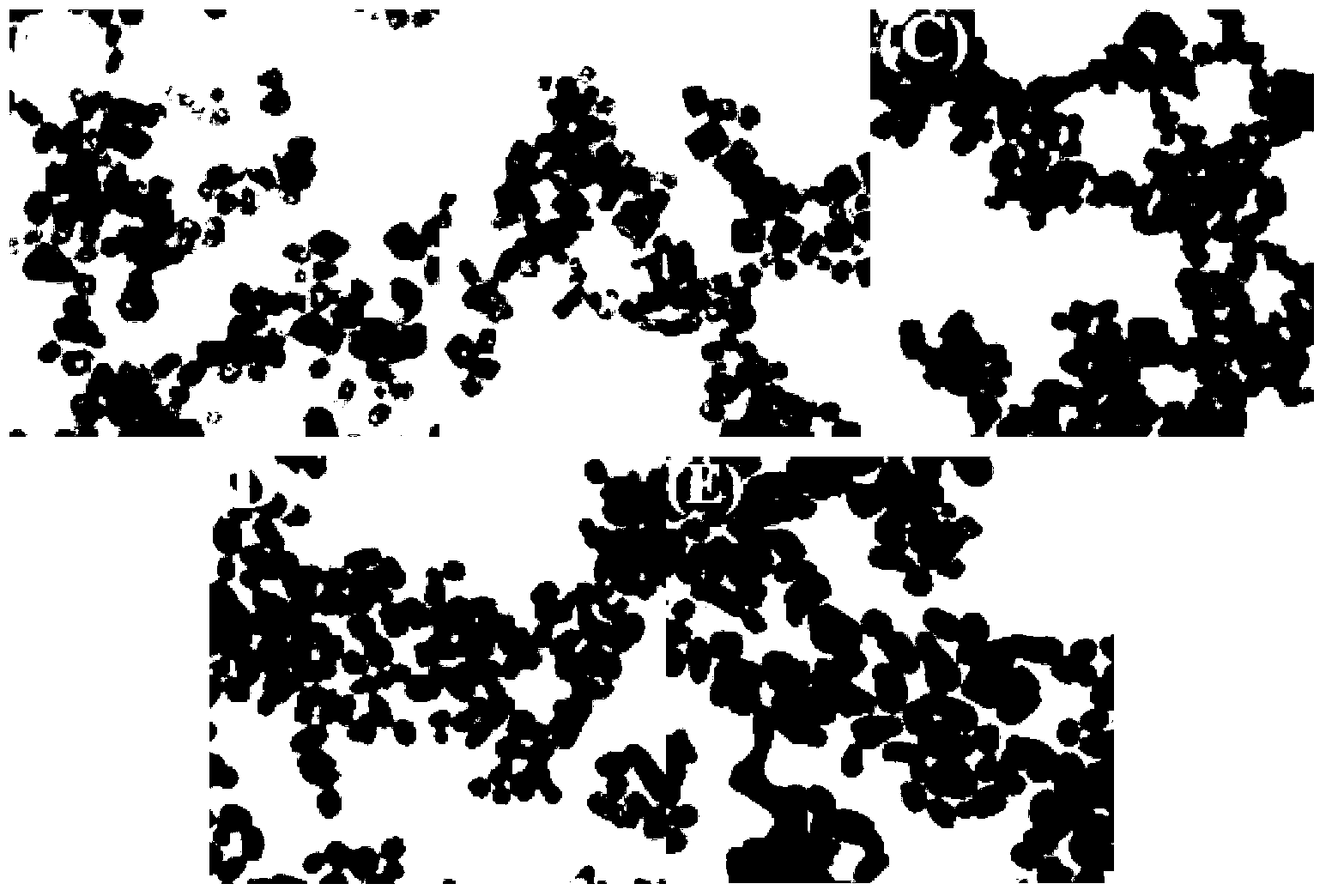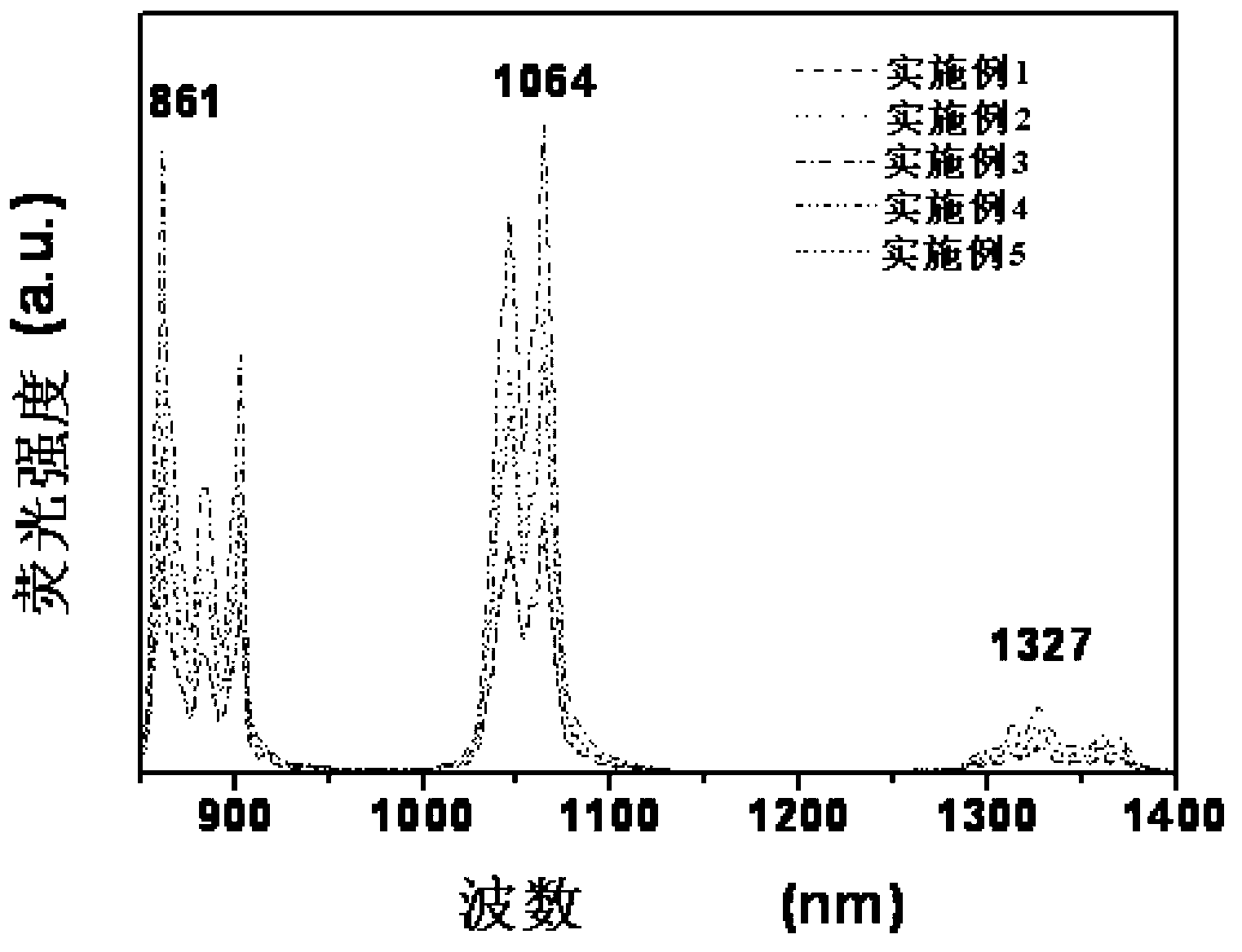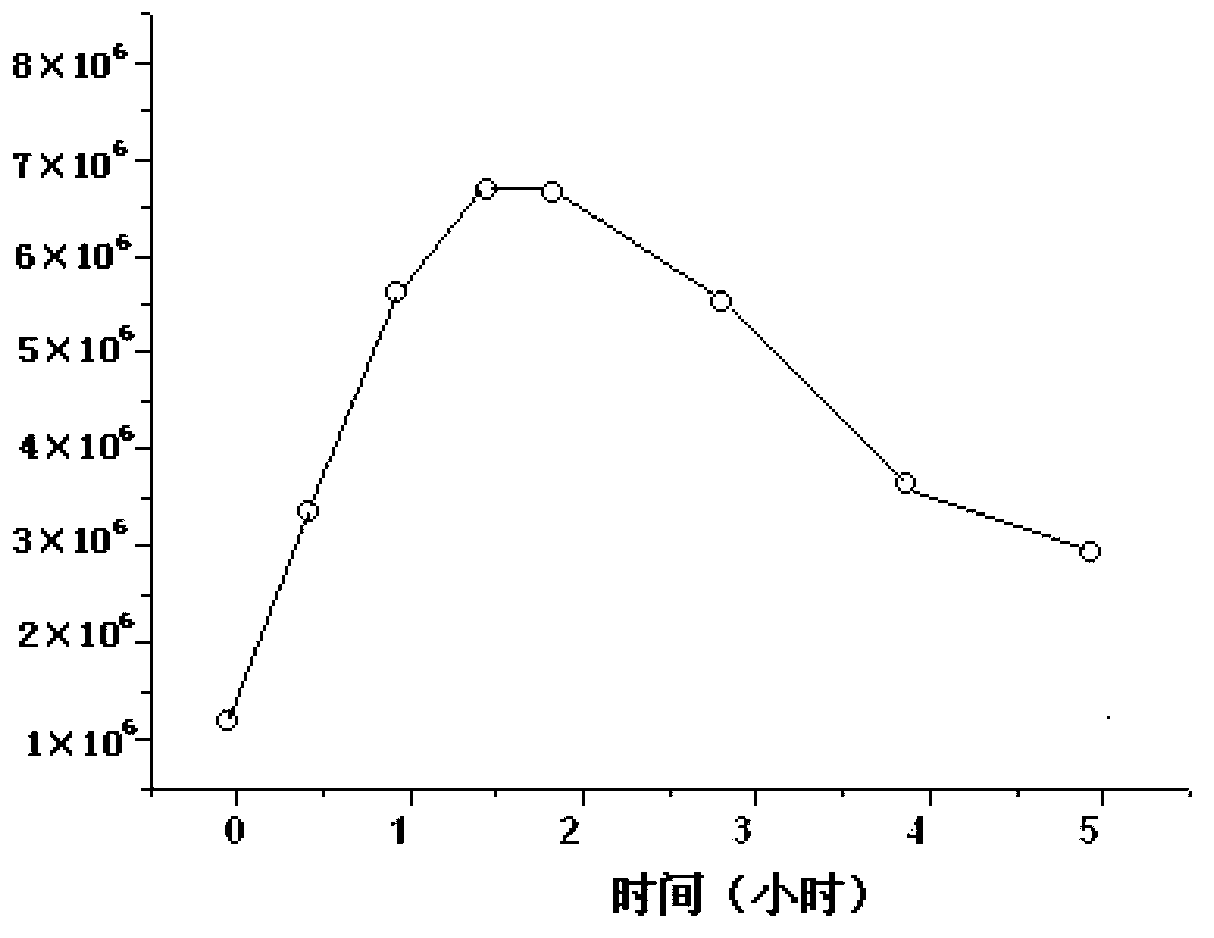Magneto-optical bimodal imaging probe rare earth nanoparticle, and preparation method and application thereof
A magneto-optical dual-mode and nanoparticle technology, which is applied in nuclear magnetic resonance/magnetic resonance imaging contrast agents, luminescent materials, fluorescence/phosphorescence, etc., can solve the problems of degradation of organic fluorescent molecules, inability to meet long-term tracers, cumbersome preparation methods, etc. problems, to achieve the effects of low toxicity and side effects, good clinical application prospects, and high quantum yield
- Summary
- Abstract
- Description
- Claims
- Application Information
AI Technical Summary
Problems solved by technology
Method used
Image
Examples
Embodiment 1
[0021] Embodiment 1. Preparation of rare earth nanoparticles of a magneto-optic dual-mode imaging probe:
[0022] 1.78mmol of La(NO 3 ) 3 ·6H 2 O, 1.19 mmol of Gd(NO 3 ) 3 ·6H 2 O and 0.03mmol Nd(NO 3 ) 3 ·6H 2 O was dissolved in 10 mL of distilled water and mixed with 20 mL of ethanol. Then, the mixture of 10mL NaF aqueous solution (1M) and 5mL10wt% polyethyleneimine aqueous solution was added dropwise to the above solution, and the obtained mixed solution was stirred for 10min and then transferred to a 50ml reactor, sealed and heated to 180°C for 10h. Finally, the reactor was cooled to room temperature. The precipitate was separated by centrifugation and washed several times with ethanol and water. Finally, vacuum-dried to obtain polyethyleneimine-coated La 0.6 Gd 0.4 f 3 : Nd1% rare earth nanoparticles, (the element content of the product is measured by inductively coupled plasma mass spectrometry, the same below), the basic physical and chemical parameters are...
Embodiment 2
[0023] Example 2. Preparation of a magneto-optical dual-mode imaging probe rare earth nanoparticles:
[0024] 0.56mmol of La(NO 3 ) 3 ·6H 2 O, 2.24 mmol of Gd(NO 3 ) 3 ·6H 2 O and 0.2mmol Nd(NO 3 ) 3 ·6H 2 O was dissolved in 10 mL of distilled water and mixed with 20 mL of ethanol. Then, 10mL of NaF aqueous solution (1M) and 5mL of 10wt% polyvinyl alcohol aqueous solution were mixed and added dropwise to the above solution, and the obtained mixed solution was stirred for 10 minutes and then transferred to a 50ml reaction kettle, sealed and heated to 150°C for 4 hours. Finally, the reactor was cooled to room temperature. The precipitate was separated by centrifugation and washed several times with ethanol and water. Finally, the polyvinyl alcohol-coated La was obtained by vacuum drying. 0.2 Gd 0.8 f 3 : Nd7% rare earth nanoparticles, the basic physical and chemical parameters are shown in Table 1.
Embodiment 3
[0025] Example 3. Preparation of a magneto-optical dual-mode imaging probe rare earth nanoparticles:
[0026] 0.81mmol of La(NO 3 ) 3 ·6H 2 O, 1.89 mmol of Gd(NO 3 ) 3 ·6H 2 O and 0.3mmolNd(NO 3 ) 3 ·6H 2 O was dissolved in 10 mL of distilled water and mixed with 20 mL of ethanol. Then, the chitosan aqueous solution mixture of 10mL NaF aqueous solution (1M) and 5mL10wt% was added dropwise to the above-mentioned solution, and the obtained mixture was stirred for 10min, then transferred to a 50ml reactor, sealed and heated to 250°C for 12h. Finally, the reactor was cooled to room temperature. The precipitate was separated by centrifugation and washed several times with ethanol and water. Finally, vacuum drying yielded chitosan-coated La 0.3 Gd 0.7 f 3 : Nd10%, see Table 1 for basic physical and chemical parameters.
PUM
| Property | Measurement | Unit |
|---|---|---|
| radius | aaaaa | aaaaa |
| thickness | aaaaa | aaaaa |
| particle diameter | aaaaa | aaaaa |
Abstract
Description
Claims
Application Information
 Login to View More
Login to View More - R&D
- Intellectual Property
- Life Sciences
- Materials
- Tech Scout
- Unparalleled Data Quality
- Higher Quality Content
- 60% Fewer Hallucinations
Browse by: Latest US Patents, China's latest patents, Technical Efficacy Thesaurus, Application Domain, Technology Topic, Popular Technical Reports.
© 2025 PatSnap. All rights reserved.Legal|Privacy policy|Modern Slavery Act Transparency Statement|Sitemap|About US| Contact US: help@patsnap.com



